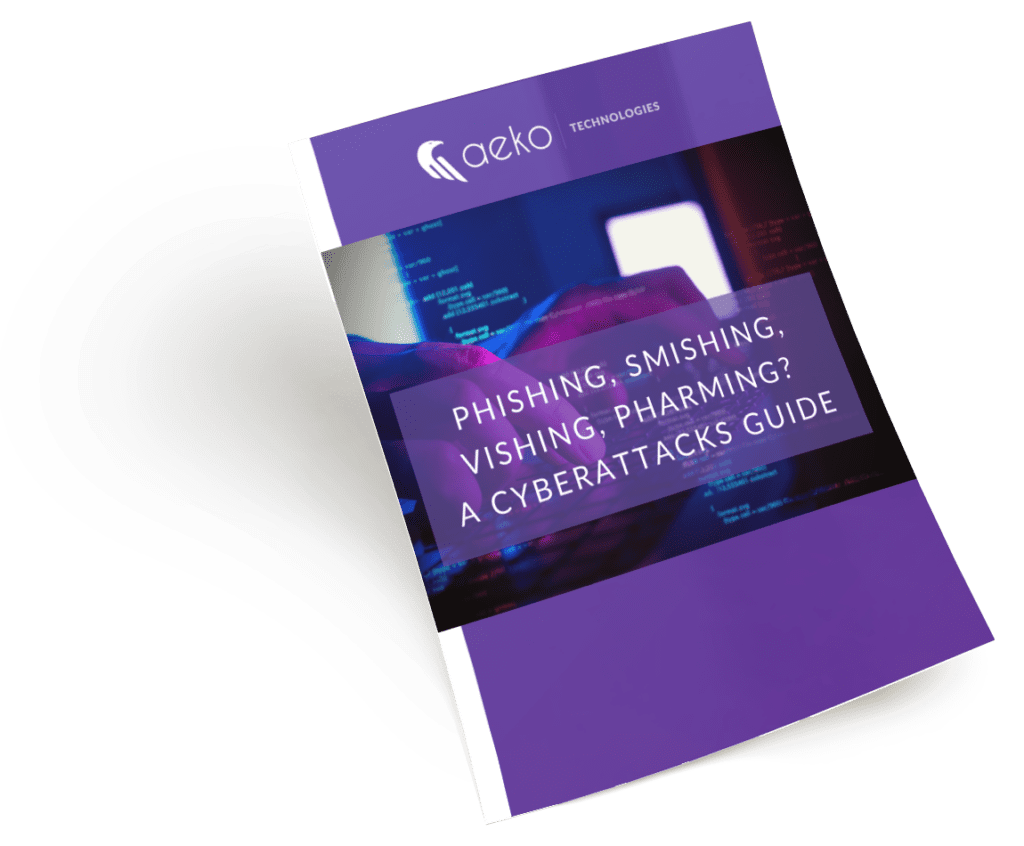Phishing, Smishing, Vishing, Pharming? A Cyberattacks Guide
All cyberattacks share a common goal: to compromise your data by stealing, hacking or destroying it. Whether phishing, smishing, vishing, pharming or even whaling, it’s important to stay informed on the ins and outs of cybercrime to protect yourself from data breaches.
Our Cyberattacks Guide will help you discover:
- Each of the most common types of cybercrime and how they work.
- Pro tips from experts on sharing sensitive information.
- A data protection cheat sheet for your personal protection.
Don’t let cybercriminals win. Get the guide today.
Get the Guide
Staying Uninformed About Cybercrime Could Crush Your Business
$149,000
The average cost of a data breach for SMBs. (The ransomware average is $133,000.)
3.4 billion
The number of malicious emails sent every day in 2023.
66 Days
The average length it takes before a cyber attack is detected.
20 seconds
The average time it takes for a new phishing website to be created.
Is Your Business Protected? Not Likely
- 80 percent of small businesses are concerned about being a cybercrime target within the next six months.
- Only 14 percent rate their ability to lower their risk of cybercrime as "highly effective."
- 78 percent of businesses store sensitive or valuable information AND don't encrypt any of it.
- 62 percent don't upgrade or update their apps and software.
- 81 percent check on asset locations only once a year or even less often.
- 75 percent don't have a disaster recovery plan in place.
- 51 percent have zero budget allocated to cybersecurity.
These Cybercriminal Methods Aren’t The Only Thing To Be Concerned About
Cybercriminals can access your network, steal your data or disrupt your business in lots of different ways, and they keep coming up with new ones by the day.
Here are some of them:
- Drive-by: You won’t notice when this attack happens. Simply by clicking on a link or visiting a website, your system becomes infected with malware. The malware doesn’t take actions you can see, but runs in the background, siphoning data used in other forms of attack.
- Distributed denial of service (DDOS): A website, network, server or computer is targeted with the goal of taking it offline to disrupt your business.
- Man in the middle (MITM): Hackers get between users and servers to take control. They can pretend to be you to your users or spoof your IP to access other servers or applications to harvest data.
- Malicious software (malware): This includes ransomware, viruses, trojans, worms and other infection types.
- SQL Injection: Exploiting vulnerabilities in a website's database to manipulate or extract sensitive data.
- Keylogging: Capturing keystrokes to obtain login credentials or other sensitive information.
And these are just a few examples when it comes to cybercrime methods. Hackers are always coming up with new ones. Ensure your business is well-protected with our guide.
Download this free Cyberattacks Guide to start your journey to better business cybersecurity. In a few minutes, you’ll discover if your company is aware of the most common cybercriminal methods. Use this resource with your internal IT team or managed service provider to determine where you need to start improving your cybersecurity awareness.

